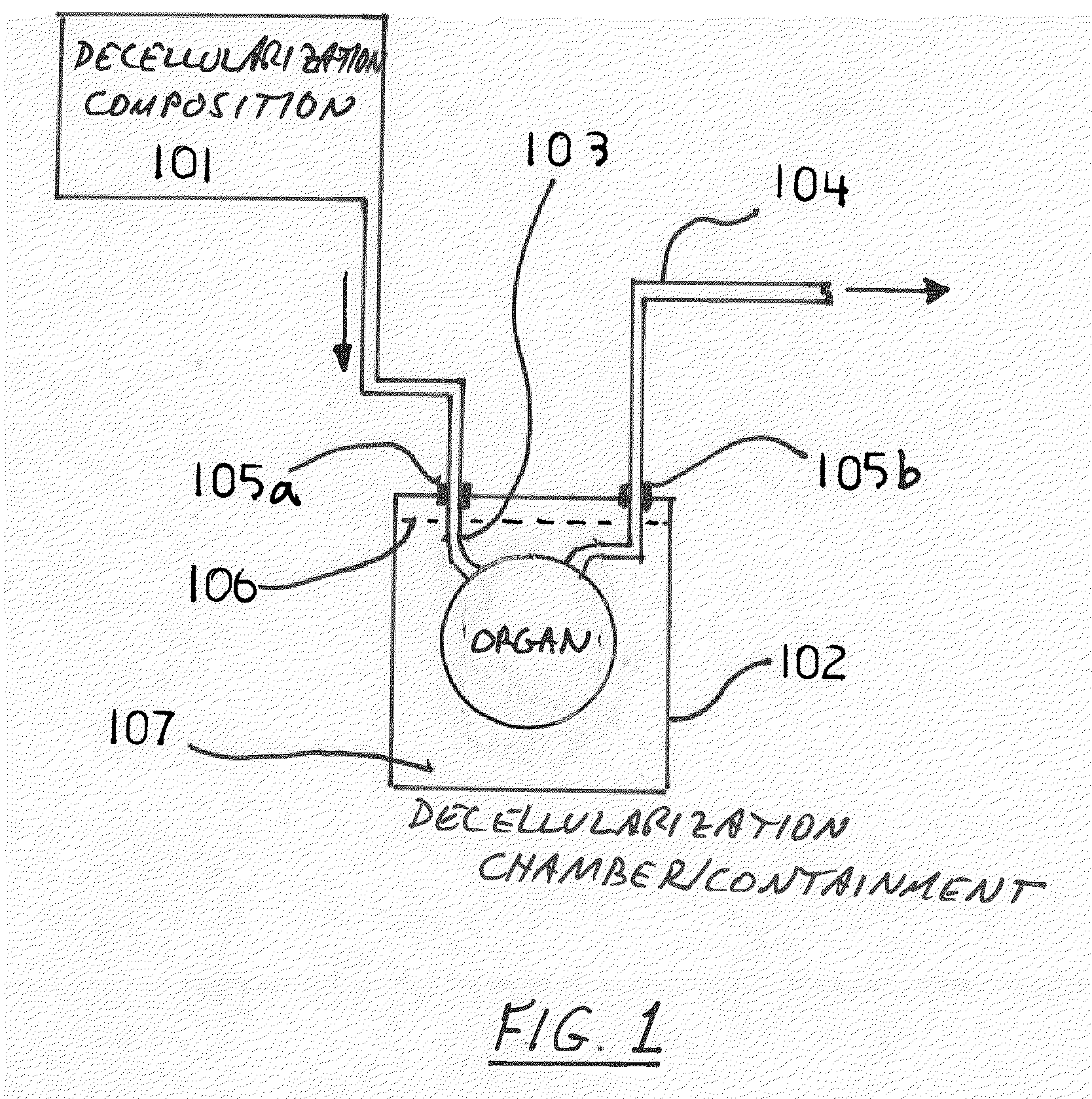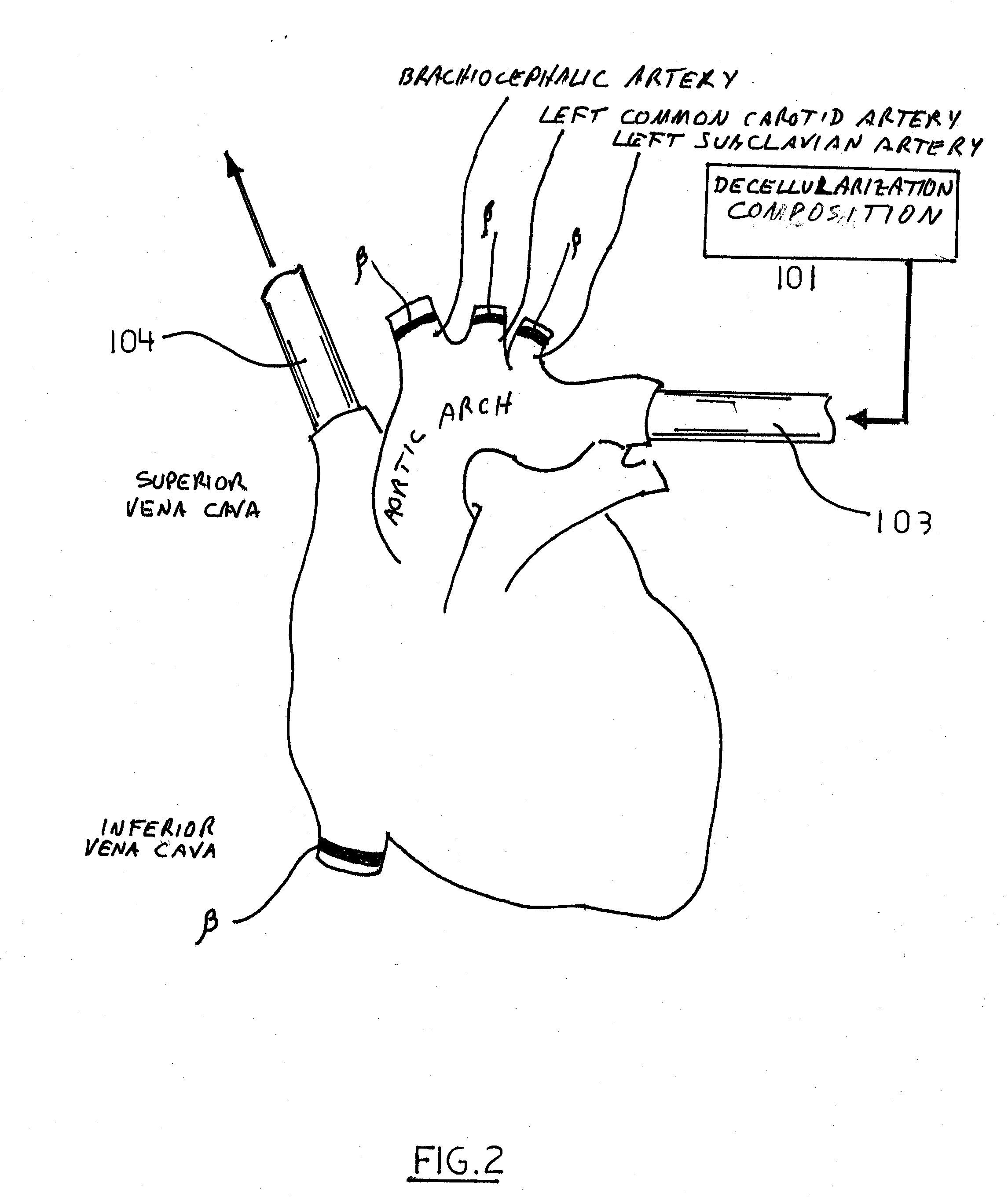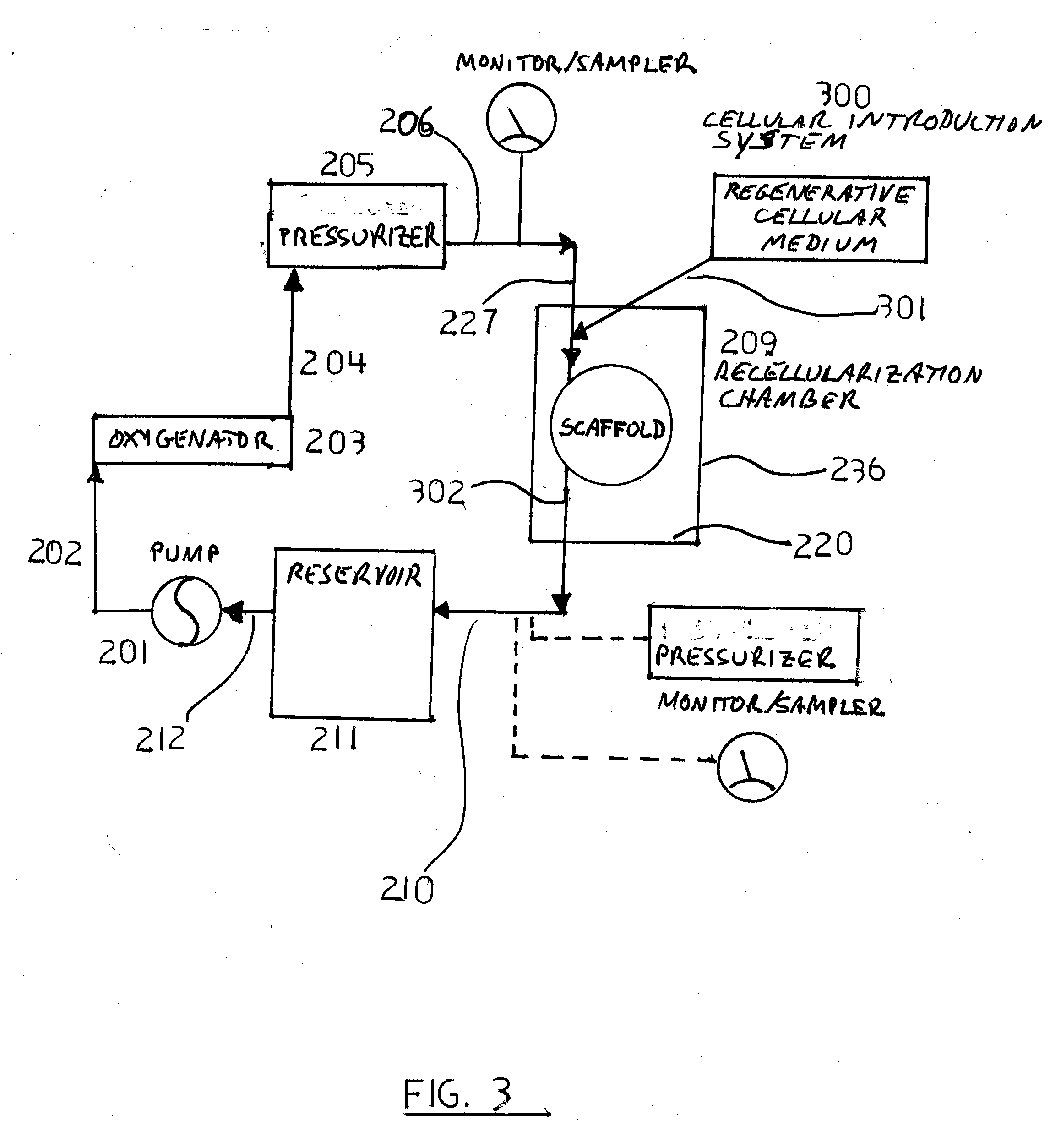Decellularization and recellularization apparatuses and systems containing the same
a technology of recellularization apparatus and recellularization composition, which is applied in the direction of biochemical apparatus and processes, specific use bioreactors/fermenters, prosthesis, etc., can solve the problems of the successful recellularization of the scaffold, compromising the quality and integrity of the scaffold or its constituents, and affecting the use of the scaffold. , to achieve the effect of reducing and minimizing the residency of the decellularization composition
- Summary
- Abstract
- Description
- Claims
- Application Information
AI Technical Summary
Benefits of technology
Problems solved by technology
Method used
Image
Examples
example
Example 1
Comparative Data: Perfusion Organ Decellularization Versus Immersion Decellularization Techniques Using Kidney
[0155]Using a kidney as the organ, the organ was decellularized using the immersion methods described in U.S. Pat. Nos. 6,753,181 and 6,376,244, incorporated herein by reference. Briefly, an organ was placed in dH2O and agitated with a magnetic stir bar rotating at 100 rpm for 48 hours at 4° C., and then the organ was transferred to an 10 ammonium hydroxide (0.05%) and Triton X-100 (0.5%) solution for 48 hours with continued magnetic stir bar (100 rpm) stirring of the solution. The solution was changed and the 48 hr immersion with the ammonium hydroxide and Triton X-100 was repeated as needed to decellularize the organ (generally a visual acellular organ). The liver took approximately 5 repetitions of ammonium 15 hydroxide and Triton X-100 to generate a visually acellular organ. After the decellularization process, organs were transferred to dH2O for 48 hours with a...
PUM
| Property | Measurement | Unit |
|---|---|---|
| temperature | aaaaa | aaaaa |
| body temperature | aaaaa | aaaaa |
| body temperature | aaaaa | aaaaa |
Abstract
Description
Claims
Application Information
 Login to View More
Login to View More - R&D
- Intellectual Property
- Life Sciences
- Materials
- Tech Scout
- Unparalleled Data Quality
- Higher Quality Content
- 60% Fewer Hallucinations
Browse by: Latest US Patents, China's latest patents, Technical Efficacy Thesaurus, Application Domain, Technology Topic, Popular Technical Reports.
© 2025 PatSnap. All rights reserved.Legal|Privacy policy|Modern Slavery Act Transparency Statement|Sitemap|About US| Contact US: help@patsnap.com



